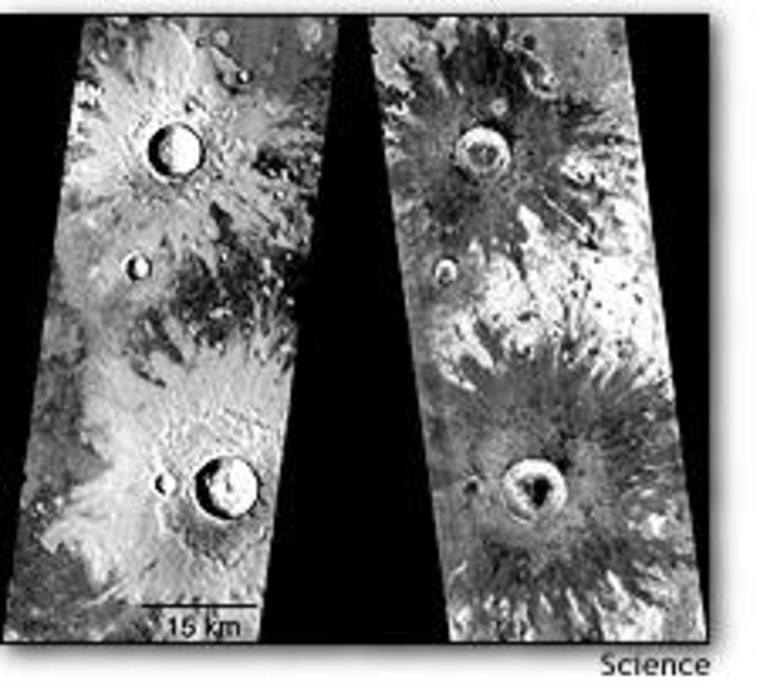A year’s worth of observations by NASA’s Mars Odyssey spacecraft paint a new picture of a more dynamic Martian surface than expected, coupled with what seems to be a changing environment.
Preliminary analysis of data from Odyssey’s Thermal Emission Imaging System, or THEMIS, shows that different layers of the planet, including some lava flows, must have been deposited under varying environmental conditions through time.
Further, the Red Planet’s surface bedrock varies significantly in thickness, the data reveal. It is exposed in some spots, and in other regions it’s buried for thousands of square miles by thick layers of dust.
Not just the same old thing
“It’s very difficult to say exactly what happened in any particular place, but what we’ve found is that in many places on Mars it hasn’t just been the same old thing happening for year after year for billions of years,” said Philip Christensen, an Arizona State University researcher and principal investigator for THEMIS.
“These data have been so remarkable and so different from all of our previous experience that it has taken time to sift through the images and figure out what we’re seeing.”
Despite the copious dust that is always blowing around Mars, the images show broad regions of exposed bedrock that scientists did not expect to find. Something must be scouring the surface in modern times, Christensen and his colleagues figure. Elsewhere, loose rocks were found to be common on hillsides, suggesting recent weathering.
“If those rocks had been made a billion years ago, they’d be covered with dust,” Christensen said. “This shows a dynamic Mars — it’s an active place.”
A paper detailing the findings appears Friday in the online version of the journal Science.
Looking for water
Mars Odyssey, like any good Mars probe, is ultimately tasked with the search for water. Already, it has found strong signs for vast amounts of ice. Liquid water has remained elusive. While many scientists had hoped Odyssey would detect subsurface heat differences indicating underground pools of water or lava, nothing like that has been found.
In an interview in late 2001, Christensen told Space.com that he thought discovering water in this manner was a long shot.
In fact, Odyssey has found signs of utter drought. In the paper, Christensen discusses in detail the lack of signs for liquid water, chemical signatures he first presented in March.

In the Ganges Chasma, a canyon some 2.8 miles (4.5 kilometers) deep, THEMIS detected deposits of the mineral olivine. This mineral decomposes rapidly when exposed to water, so finding it suggests that there has never been much water in the canyon.
“This gives us an interesting perspective of water on Mars,” Christensen said. “There can’t have been much water — ever — in this place.”
Other parts of Mars, he noted, show stronger signs of having once been wet.
